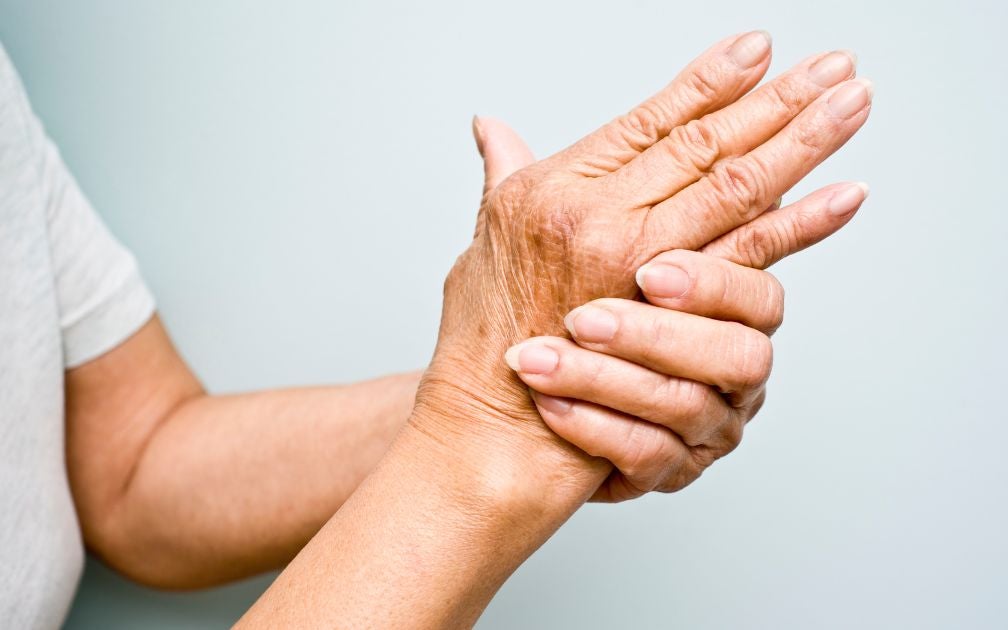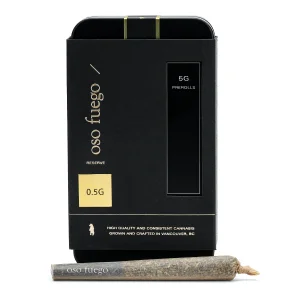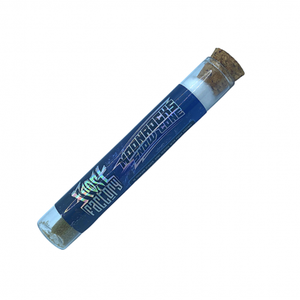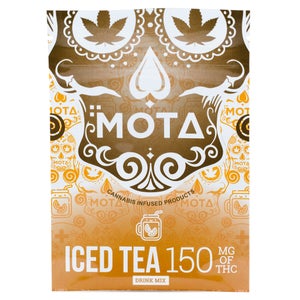The Best Cannabis for Arthritis Pain Relief: A Comprehensive Guide
Table of Contents
- Understanding Cannabis and Arthritis
- The Role of THC, CBD, and Terpenes in Arthritis Pain Relief
- Factors to Consider When Choosing Cannabis for Arthritis Pain Relief
- Best Cannabis for Arthritis Pain Relief
- Consumption Methods for Arthritis Pain Relief
- Precautions and Consideration
- Conclusion
- FAQ
Millions of Canadians suffer from arthritis, and many of them are now exploring the remarkable potential of the best cannabis for arthritis pain management. From CBD-rich varieties to balanced THC:CBD ratios, learn more about the science behind cannabinoids’ anti-inflammatory properties and their ability to provide comfort and respite. This blog takes a closer look at the latest research, expert insights, consumption methods, and practical tips for finding the best cannabis solutions to alleviate arthritis pain.
Understanding Cannabis and Arthritis
To comprehend how cannabis can aid in managing arthritis pain, it is crucial to familiarize ourselves with its components. Cannabis contains different compounds, including THC (tetrahydrocannabinol), CBD (cannabidiol), and terpenes. THC is responsible for the psychoactive effects of cannabis, while CBD is non-psychoactive but has potential therapeutic properties. Terpenes are aromatic compounds found in various plants, including cannabis, and contribute to the plant’s distinct flavors and aromas.
When consumed, cannabinoids present in cannabis interact with the body’s endocannabinoid system (ECS). The ECS is a complex network of receptors, enzymes, and endocannabinoids that play a role in regulating various bodily functions, including pain perception, immune response, and inflammation. By interacting with the ECS, cannabis compounds may modulate pain signals and provide relief for arthritis sufferers.
Research suggests that cannabis may manage arthritis pain through multiple mechanisms. Firstly, cannabinoids can act as analgesics, reducing the perception of pain. Secondly, they possess anti-inflammatory properties, potentially mitigating the inflammation that contributes to joint discomfort. Furthermore, cannabinoids may help regulate the immune system, which plays a role in the progression of arthritis.
The Role of THC, CBD, and Terpenes in Arthritis Pain Relief
THC, the primary psychoactive compound in cannabis, has demonstrated pain-relieving properties. It interacts with the body’s cannabinoid receptors, particularly CB1 receptors found in the brain and nervous system. By binding to these receptors, THC can modify pain signals and provide temporary relief. However, it is important to note that high levels of THC may induce intoxicating effects, which may not be desirable for everyone.
On the other hand, CBD has garnered attention for its potential therapeutic benefits without the psychoactive effects. CBD interacts with various receptors in the body, including CB1 and CB2 receptors in the ECS. Studies suggest that CBD may possess anti-inflammatory and analgesic properties, making it an attractive option for arthritis pain relief.
Terpenes, although often overlooked, also contribute to the overall effects of cannabis. Different strains of cannabis contain varying terpene profiles, which can influence the plant’s aroma, flavor, and potential therapeutic benefits. For example, the terpene myrcene is believed to possess anti-inflammatory properties, while limonene may contribute to mood elevation. Understanding the terpene composition of a cannabis strain can aid in selecting one that aligns with an individual’s desired effects and potential pain relief.
Factors to Consider When Choosing the Best Cannabis for Arthritis Pain Relief
Difference between CBD-dominant and THC-dominant strains
When selecting the best cannabis for arthritis pain relief, it is essential to understand the difference between CBD-dominant and THC-dominant strains. CBD-dominant strains, as the name suggests, contain higher levels of CBD compared to THC. CBD is known for its potential anti-inflammatory and analgesic properties, making it a popular choice for individuals seeking relief from arthritis-related discomfort. These strains typically offer minimal psychoactive effects, allowing users to experience the potential therapeutic benefits without feeling intoxicated or impaired.
On the other hand, THC-dominant strains contain higher levels of THC, the psychoactive compound in cannabis. While THC is known for its potential pain-relieving properties, it also induces the characteristic “high” associated with cannabis use. Some individuals may find the psychoactive effects of THC undesirable or overwhelming, particularly during daytime activities or when mental clarity is required.
The choice between CBD-dominant and THC-dominant strains depends on individual preferences, desired effects, and sensitivity to psychoactive compounds. CBD-dominant strains are often favored by individuals who want to manage arthritis pain while maintaining a clear-headed experience. THC-dominant strains, on the other hand, may be suitable for those who can tolerate or even seek the euphoric effects of cannabis alongside pain relief.
Understanding the entourage effect and its relevance to arthritis pain relief
The entourage effect refers to the synergistic interaction of various compounds found in cannabis, including cannabinoids, terpenes, and other phytochemicals. Rather than focusing solely on individual components like THC or CBD, the entourage effect suggests that the combined presence of multiple compounds produces enhanced therapeutic effects.
In the context of arthritis pain relief, the entourage effect becomes particularly relevant. Research suggests that cannabinoids and terpenes work together to modulate pain perception, reduce inflammation, and enhance the overall efficacy of cannabis as a potential remedy. For example, terpenes like myrcene and caryophyllene may possess anti-inflammatory properties that complement the analgesic effects of cannabinoids. By considering the entourage effect, individuals can choose cannabis strains that offer a well-rounded and potentially more effective approach to managing arthritis pain.
Evaluating the cannabinoid and terpene profile of cannabis strains
To make an informed decision when selecting the best cannabis strains that help arthritis pain, it is crucial to evaluate the cannabinoid and terpene profile of different strains. This information can often be found on product labels or through third-party lab testing.
Cannabinoid profile: The cannabinoid profile indicates the concentration of various cannabinoids, such as THC and CBD, present in a specific strain. Strains with higher CBD content are typically more suitable for individuals seeking pain relief without significant psychoactive effects. Conversely, strains with higher THC content may offer stronger analgesic properties but with a higher likelihood of psychoactivity.
Terpene profile: Terpenes contribute to the aroma and flavor of cannabis and also play a role in its potential therapeutic effects. Different terpenes may have varying anti-inflammatory, analgesic, or mood-enhancing properties. Some commonly found terpenes in cannabis strains include myrcene, limonene, and pinene. Evaluating the terpene profile can help individuals select strains that align with their desired effects and potential pain relief.
By considering the cannabinoid and terpene profiles of cannabis strains, individuals can make more informed choices based on their specific needs and preferences. Consulting with knowledgeable professionals in dispensaries or healthcare providers familiar with medical cannabis can also provide valuable guidance in selecting strains with the most appropriate profiles for arthritis pain relief.
Best Cannabis for Arthritis Pain Relief
When it comes to finding the best cannabis for arthritis pain relief, different varieties offer unique characteristics and potential benefits. Here, we explore the top strains from each category: indica, CBD-dominant, hybrid, and sativa. Understanding their specific attributes, terpene profiles, and potential effects can help individuals make informed decisions based on their preferences and desired pain management outcomes.
Indica Strains
Indica strains are well-known for their relaxing and sedating properties. They are often sought after for their potential pain-relieving effects, making them suitable for individuals with arthritis. Indica strains typically have higher levels of CBD, which contributes to their analgesic properties, and certain terpenes that further enhance their pain-relieving potential.
- Granddaddy Purple: This popular indica strain is recognized for its deep purple hues and sweet, grape-like aroma. It contains high levels of the terpene myrcene, which is known for its potential anti-inflammatory properties. Granddaddy Purple’s combination of myrcene and CBD may provide significant relief from arthritis pain.
- Northern Lights: A classic indica strain, Northern Lights is renowned for its ability to induce deep relaxation and sedation. This strain often contains high levels of the terpene caryophyllene, which exhibits anti-inflammatory properties. The combination of caryophyllene and CBD in Northern Lights may offer effective pain management for arthritis sufferers.
CBD-dominant Strains
CBD-dominant strains are characterized by their high levels of CBD, making them suitable for individuals seeking pain relief without pronounced psychoactive effects. These strains often have lower levels of THC, providing a clear-headed experience while potentially alleviating arthritis-related discomfort.
- Charlotte’s Web: Named after Charlotte Figi, a young girl who found significant relief from her seizures with CBD, Charlotte’s Web is renowned for its high CBD content and minimal THC levels. This strain offers potential anti-inflammatory and analgesic effects without inducing psychoactivity. It has gained popularity among individuals seeking natural alternatives for arthritis pain relief.
- Harle-Tsu: With a balanced CBD to THC ratio, Harle-Tsu combines the potential benefits of both cannabinoids. This strain is often sought after for its analgesic properties and its ability to promote relaxation without significant intoxication. Harle-Tsu’s CBD-dominant profile makes it a promising option for managing arthritis pain.
Hybrid Strains
Hybrid strains are the result of crossbreeding indica and sativa varieties, offering a blend of their respective characteristics. These strains can provide a well-rounded experience, combining the potential pain relief of indica strains with the uplifting effects of sativa strains.
- Cannatonic: As a CBD-dominant hybrid strain, Cannatonic offers a balanced experience that combines potential pain relief with mild psychoactive effects. This strain’s CBD content makes it suitable for individuals seeking arthritis pain relief without pronounced intoxication.
- ACDC: Another notable hybrid strain, ACDC, features a high CBD to THC ratio, making it a preferred choice for individuals seeking CBD’s potential therapeutic benefits without significant psychoactive effects. ACDC may provide effective pain relief while maintaining mental clarity and functionality.
Sativa Strains
Sativa strains are known for their energizing and uplifting effects. While they may not be the first choice for arthritis pain relief due to their stimulating nature, certain sativa strains offer potential pain relief without excessive sedation.
- Harlequin: Harlequin, with its CBD to THC ratio often in balance or slightly leaning towards CBD, provides potential pain relief while offering a clear-headed experience. This strain’s uplifting and euphoric effects may help individuals manage arthritis pain without feeling overly sedated or fatigued.
- Jack Herer: Jack Herer is a popular sativa-dominant strain known for its potential analgesic properties. It contains a diverse terpene profile, including terpinolene and pinene, which may contribute to its anti-inflammatory effects. Jack Herer offers a more uplifting and cerebral experience, making it a suitable option for individuals seeking pain relief without excessive sedation.
When selecting sativa strains for arthritis pain relief, it is important to consider strains that have a balanced cannabinoid profile with moderate levels of THC and higher levels of CBD. This combination may provide the desired pain-relieving effects while minimizing the potential for anxiety or restlessness that can be associated with high THC strains.
It is worth noting that individual responses to cannabis strains can vary. What works for one person may not have the same effect on another. It is advisable to start with a low dosage and gradually increase if needed while monitoring the effects closely. Consulting with a healthcare professional experienced in medical cannabis can provide personalized guidance and ensure safe and effective use.
Consumption Methods for Arthritis Pain Relief
When using cannabis for arthritis pain relief, it is important to explore the various consumption methods available. Each method offers unique benefits and considerations that can impact the effectiveness and experience of pain management. Here, we provide an overview of different cannabis consumption methods, discuss their pros and cons, and offer recommendations for choosing the most suitable method based on individual preferences and needs.
Smoking
Smoking cannabis involves inhaling the smoke produced by combusting the dried flowers or buds. This traditional method offers quick onset and allows for easy dose control. It is important to note that smoking can irritate the respiratory system and may not be suitable for individuals with lung conditions. However, some individuals find smoking to be an effective and immediate way to manage arthritis pain.
Pros: Quick onset of effects, easy dose control, wide variety of strains available.
Cons: Potential respiratory irritation, not suitable for individuals with lung conditions.
Vaporizing (Vaping)
Vaporizing cannabis involves heating the plant material or concentrates to a temperature that releases the desired cannabinoids and terpenes without combustion. This method provides a similar quick onset as smoking but is considered less harmful to the respiratory system. Vaporizers come in various forms, including portable devices and tabletop units.
Pros: Quick onset, reduced respiratory irritation compared to smoking, precise temperature control.
Cons: Initial investment in a vaporizer device, learning curve for temperature control.
Edibles
Edibles are cannabis-infused food or beverage products. When consumed, the cannabinoids are metabolized by the liver, resulting in a delayed onset of effects that can last longer than other methods. Edibles provide a discreet and convenient way to consume cannabis but require careful dosing due to the delayed onset.
Pros: Discreet, long-lasting effects, no need for inhalation.
Cons: Delayed onset, potential for overconsumption if not properly dosed.
Topicals
Topicals are cannabis-infused products, such as creams, lotions, or balms, applied directly to the skin. They do not produce psychoactive effects but may offer localized pain relief. Topicals are often preferred for targeting specific areas affected by arthritis pain, such as joints or muscles.
Pros: Targeted pain relief, no psychoactive effects.
Cons: Limited systemic effects may not provide relief for deeper pain.
Recommendations for Choosing the Most Suitable Consumption Method
Choosing the most suitable consumption method for arthritis pain relief depends on individual preferences, lifestyle, and specific needs. Here are some recommendations to consider:
- Start low and go slow: Regardless of the consumption method, it is essential to start with a low dosage and gradually increase if needed. This approach allows individuals to assess their tolerance and find the optimal dosage for pain relief.
- Consider health factors: If you have respiratory issues, smoking or vaping may not be the most suitable methods. In such cases, edibles or topicals could be better alternatives.
- Seek professional advice: Consulting with a healthcare professional experienced in medical cannabis can provide valuable guidance in selecting the most appropriate consumption method based on individual health conditions and preferences.
- Experiment and personalize: Everyone’s response to cannabis is unique. It may be necessary to experiment with different methods to find the one that provides the best pain relief with the least side effects.
- Combine methods if necessary: Some individuals find that using a combination of consumption methods works best for their arthritis pain. For example, they may use topicals for localized relief and edibles for longer-lasting systemic effects.
Ultimately, the choice of consumption method should be based on personal comfort, lifestyle, and desired effects. Regular evaluation and adjustments can help optimize pain management with cannabis for individuals with arthritis.
Precautions and Considerations
When using cannabis for arthritis pain relief, it is crucial to take certain precautions and considerations to ensure safe and effective use. Consulting with a healthcare professional, understanding potential side effects and drug interactions, and being aware of legal considerations and regulations are important steps to take.
Importance of Consulting with a Healthcare Professional
Before incorporating cannabis into your pain management routine, it is highly recommended to consult with a healthcare professional who has knowledge and experience in medical cannabis. They can provide personalized guidance based on your specific health conditions, medication regimen, and potential interactions. A healthcare professional can help you determine if cannabis is a suitable option for you, suggest appropriate dosage and consumption methods, and monitor your progress.
Potential Side Effects and Drug Interactions
Like any medication, cannabis can have potential side effects. These may include dry mouth, dizziness, impaired memory, increased heart rate, and changes in mood or perception. It is important to be aware of these potential effects and monitor how cannabis affects you individually. If you experience any concerning or persistent side effects, it is advised to consult with a healthcare professional.
Cannabis can also interact with certain medications. It is essential to disclose all medications you are taking, including over-the-counter drugs and supplements, to your healthcare professional. They can help assess potential drug interactions and determine the safest and most effective way to incorporate cannabis into your pain management regimen.
Legal Considerations and Regulations
The legal status of cannabis varies by jurisdiction. It is important to understand the laws and regulations in your specific region regarding the medical or recreational use of cannabis. Familiarize yourself with any restrictions, licensing requirements, or patient registration processes that may be in place. Compliance with legal requirements ensures that you are accessing cannabis through legal channels and mitigates any potential legal consequences.
Additionally, it is essential to obtain cannabis products from reputable sources that adhere to quality control standards. This helps ensure product safety, consistency, and accurate labeling of cannabinoid content.
Personal Responsibility and Moderation
While cannabis can provide potential relief for arthritis pain, it is crucial to approach its use responsibly. Moderation is key, and it is important to understand your personal tolerance, set limits, and avoid excessive consumption. Starting with low doses and gradually increasing as needed allows for better control of the effects and reduces the risk of adverse reactions.
Furthermore, being mindful of your surroundings and responsibilities is vital. Avoid operating machinery, driving, or engaging in tasks that require focus and coordination while under the influence of cannabis.
Conclusion
In the quest for arthritis pain relief, cannabis emerges as a fascinating natural option. With its ability to interact with the body’s endocannabinoid system, cannabis strains offer a potential pathway to soothing aching joints. From the relaxing indica strains to the therapeutic CBD-dominant varieties, and the well-rounded hybrid and uplifting sativa strains, there’s a wide array of options to explore. However, it’s important to approach cannabis use responsibly by consulting healthcare professionals, understanding potential side effects, considering drug interactions, and complying with legal regulations. By combining knowledge, personalized approaches, and a sense of adventure, individuals can navigate the realm of cannabis and discover the strains and consumption methods that bring them the desired relief, improving their quality of life in the process.
Frequently Asked Questions (FAQs)
What kind of cannabis is good for arthritis pain?
When it comes to arthritis pain relief, strains that are high in CBD (cannabidiol) and low in THC (tetrahydrocannabinol) are often recommended. CBD-dominant strains, such as Charlotte’s Web or ACDC, offer potential pain relief without inducing significant psychoactive effects. These strains may help reduce inflammation and provide analgesic effects, making them suitable for managing arthritis pain.
Why does cannabis help arthritis?
Cannabis contains compounds called cannabinoids, such as THC and CBD, which interact with the body’s endocannabinoid system. This system plays a role in regulating pain, inflammation, and immune responses. By interacting with cannabinoid receptors in the body, cannabis can help modulate pain signals, reduce inflammation, and potentially alleviate arthritis symptoms.
Do cannabis products help with pain?
Yes, cannabis products have shown promise in helping with pain management. The cannabinoids in cannabis, particularly THC and CBD, have analgesic properties that can provide relief from various types of pain, including arthritis pain. However, individual responses to cannabis may vary, and it is important to find the right product and dosage that works best for each person’s unique needs.
Is cannabis or CBD better for pain?
Both cannabis and CBD can be effective for pain relief, but the choice depends on individual preferences and circumstances. Cannabis products containing THC may offer stronger pain-relieving effects due to their psychoactive properties. On the other hand, CBD products derived from hemp typically do not produce psychoactive effects and may be a preferred option for individuals seeking pain relief without the high associated with THC. Ultimately, the best choice depends on personal preferences, desired effects, and legal considerations.
Is CBD good for arthritis?
Yes, CBD has shown potential for alleviating arthritis symptoms. CBD possesses anti-inflammatory properties, which can help reduce joint inflammation and associated pain. It may also assist in managing other symptoms commonly experienced with arthritis, such as sleep disturbances and anxiety. However, it is important to note that CBD’s effectiveness may vary from person to person, and finding the right dosage and product is essential for optimal results. Consulting with a healthcare professional experienced in CBD use is recommended for individuals considering CBD for arthritis.

















